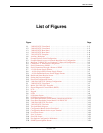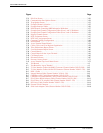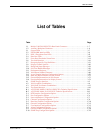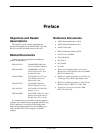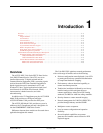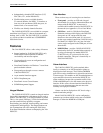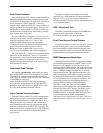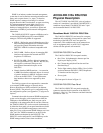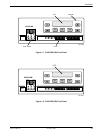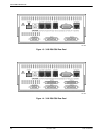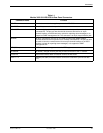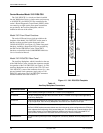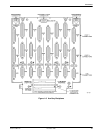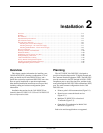
ACCULINK 316x DSU/CSU
1-4 December 1996 3160-A2-GB22-10
SNMP is an industry-standard network management
system that is used to monitor network performance and
status, and to report alarms (i.e., traps). To function,
SNMP requires a manager consisting of a software
program housed within a workstation; an agent consisting
of a software program housed within a device (e.g.,
3160/3164 DSU/CSU); and a MIB consisting of a
database of managed objects, accessible to agents and
controlled via SNMP, to provide network management
information.
The 3160/3164 DSU/CSU supports a MIB that can be
accessed using SNMP protocol by external SNMP
managers. The following MIBs are supported:
• MIB II – Defines the general objects for use with a
network management protocol in TCP/IP internets
and provides general information about the
DSU/CSU. MIB II is backward-compatible with
MIB I.
• DS1/E1 MIB – Defines objects for managing DS1
interfaces and supports the network and DTE
drop/insert T1 interfaces.
• RS-232-like MIB – Defines objects for managing
RS-232 type interfaces (e.g., RS-422, RS-423, etc.)
and supports synchronous data ports and
management communication ports on the
DSU/CSU.
• Generic-Interface MIB Extensions – An extension
to MIB II that defines additional objects for control
of generic interfaces in MIB II. It supports control
of tests on the DSU/CSU’
s T1 and synchronous
data interfaces that are not supported by other
MIBs.
Two link layer protocols are supported for connection
to an external SNMP manager or network device,
Point-to-Point Protocol (PPP) and Serial Line Internet
Protocol (SLIP). The protocol type is configurable using
the configuration options (see Appendix C, Configuration
Options).
Communication with the external SNMP management
system can be through a serial connection on either the
COM port or the MODEM port. Only one port can be
configured as the management link at one time. However,
the 3160/3164 DSU/CSU can be accessed simultaneously
by either the front panel or front panel emulation software
on one port, and an SNMP management system on the
other port. Users on the external SNMP manager can issue
“Get” and “Set” SNMP commands to an object in the
SNMP database maintained by the DSU/CSU. The
DSU/CSU can be configured to issue SNMP traps to the
SNMP manager under various alarm conditions.
ACCULINK 316x DSU/CSU
Physical Description
The ACCULINK 316x DSU/CSU series of products
consists of a standalone 2-port Model 3160 DSU/CSU, a
standalone 4-port Model 3164 DSU/CSU and a 2-port
carrier-mounted Model 3161 DSU/CSU.
Standalone Model 3160/3164 DSU/CSUs
The
3160/3164 DSU/CSUs are housed in a compact,
standalone unit containing a front panel for control and
monitoring of the DSU/CSU and a rear panel for
connections. This standalone unit can be mounted on a
wall, an equipment shelf, or an RS-310-C equipment
cabinet with the optional wall-mount kit.
3160/3164 DSU/CSU Front Panel
The 3160/3164 DSU/CSU front panel contains,
• One 2-line, 16-alphanumeric character per line
liquid crystal display (LCD)
• One 7-button keypad (three Function and four
directional keys)
• Twelve light-emitting diodes (LEDs), five of which
are shared between the DSX-1 (DTE) Drop/Insert
T1 interface and the data ports.
•
Six test jacks
The front panel is shown in Figure 1-1.
3160/3164 DSU/CSU Rear Panel
The 3160/3164 DSU/CSU rear panel contains the
connectors required for the operation of the DSU/CSU
(Figures 1-3 and 1-4). The connectors and their functions
are listed in Table 1-1.



